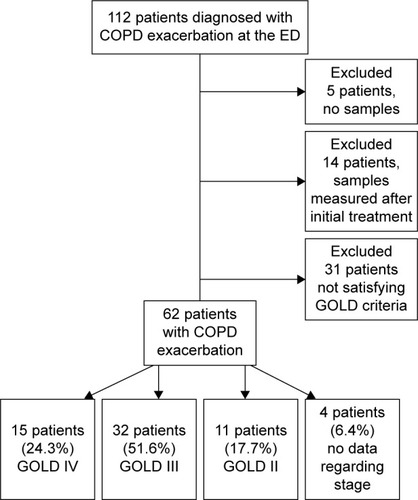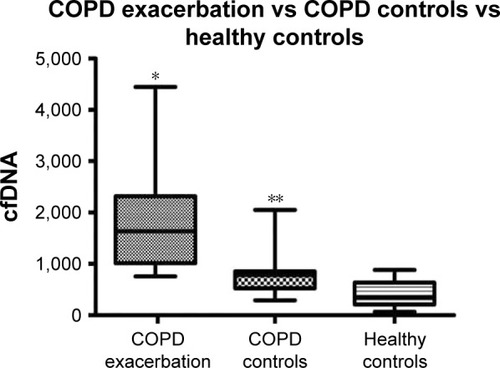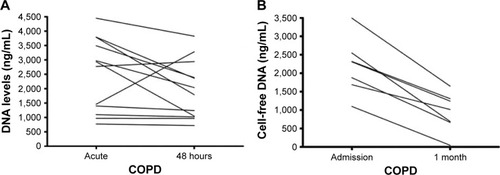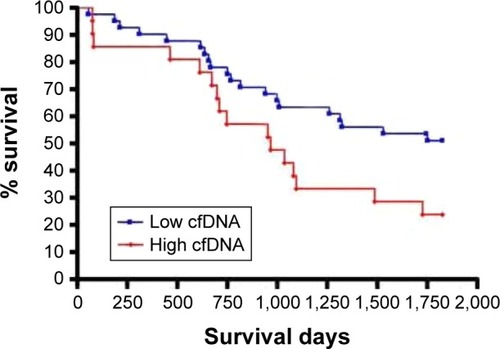Figures & data
Figure 1 Flowchart of patients who met inclusion/exclusion criteria for the study population.

Figure 2 Cell-free DNA (cfDNA) levels of COPD exacerbation group vs COPD stable control and healthy controls.
Abbreviation: IQR, interquartile range.

Table 1 Cell-free DNA divided into tertiles
Figure 3 (A) ROC curve for blood gas PaCO2; (B) ROC curve for blood gas pH.
Abbreviations: PaCO2, partial arterial pressure of carbon dioxide; ROC, receiver operating characteristic.

Figure 4 (A) Cell-free DNA levels at admission and 48 hours. (B) Cell-free DNA levels at admission and clinic (1-month post).
Abbreviation: IQR, interquartile range.

Table 2 Mortality risk of clinical characteristics and cfDNA levels

